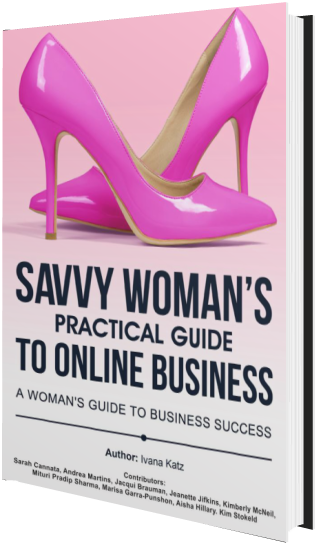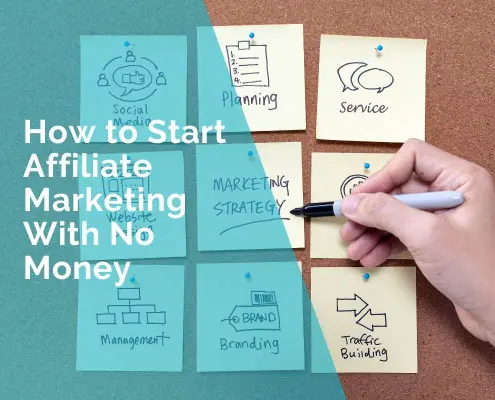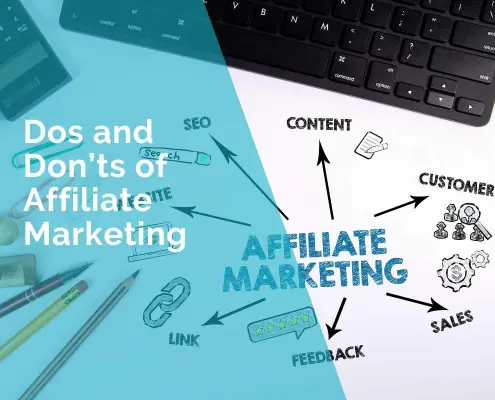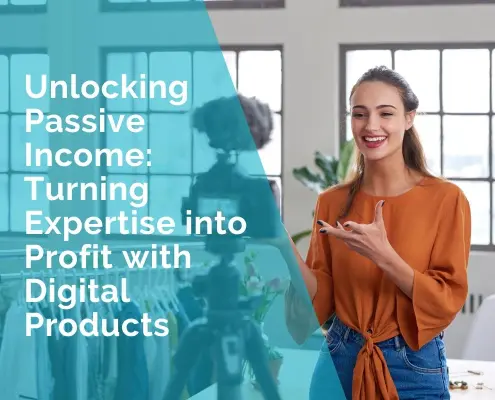Understanding Passive Income
Defining Passive Income
Let’s start with the basics. What exactly is passive income?
Imagine you have a money tree in your backyard that magically grows money, and all you have to do is pick it up. Well, passive income is kind of like that money tree, but in the financial world.
Passive income is money you earn with minimal effort after setting up an initial income stream. It’s the income that rolls in while you sleep, watch your favourite TV show, or sip a cup of coffee at your favourite café. It’s the opposite of active income, which requires you to exchange your time and effort for money, like your regular 9-to-5 job.
To make it clearer, here are a few examples of passive income sources:
- Dividend Stocks: When you own shares of a company’s stock, they often pay you a portion of their earnings regularly. You just sit back and collect those dividend checks.
- Real Estate Rentals: Owning a property that you rent out to tenants can be a significant source of passive income. You’re making money from your property without actively working on it every day.
- Royalties: If you’re a musician, author, or inventor, you might earn royalties from your work. Every time your song is played on the radio, someone buys your book, or your patented invention is used, you receive money.
- Digital Products: This is where our journey begins! Creating and selling digital products like ebooks, online courses, or software can generate passive income. You put in the effort to create the product once, and then people can buy it without your direct involvement.
Benefits of Passive Income
Now that you understand what passive income is, let’s explore why it’s so appealing:
- Financial Freedom: Passive income gives you financial security and freedom. It can help you pay bills, save for retirement, or even afford those dream vacations. You’re not tied to your job to make ends meet.
- Flexibility: With passive income, you have the flexibility to choose how and where you spend your time. You can pursue your passions, spend more time with family, or explore new hobbies.
- Reduced Stress: The uncertainty of depending solely on a paycheck can be stressful. Passive income provides stability, making it easier to weather financial storms.
- Wealth Building: Over time, passive income streams can accumulate and build wealth. You can reinvest your earnings to generate even more income.
- Retirement Planning: Passive income can serve as an excellent retirement plan. It ensures a steady income stream even after you stop working actively.
Imagine you have a rental property. Each month, your tenants pay rent, and part of that money goes towards your mortgage, while the rest goes into your pocket. This is passive income in action, and it’s helping you build wealth, pay your bills, and secure your financial future, all while you’re doing other things you enjoy.
Myths and Misconceptions
Now that we’ve established the benefits of passive income, let’s tackle some common myths and misconceptions:
- It’s Totally Passive: While passive income requires less ongoing effort than a traditional job, it’s not entirely hands-off. You usually need to invest time and sometimes money upfront to set up and maintain your income streams.
- It’s Easy and Quick: Creating passive income takes time and dedication. Beware of get-rich-quick schemes; they often lead to disappointment and financial loss.
- You Need a Lot of Money to Start: While having capital can help, it’s not always necessary. Many passive income opportunities, like digital products, can be started with minimal upfront costs.
- It’s Risk-Free: All investments, including those generating passive income, carry some level of risk. It’s essential to do your research and understand the potential pitfalls.
- It Works for Everyone: Passive income strategies vary, and not every method will suit your skills, interests, or financial situation. It’s crucial to find the right fit for you.
Think of passive income like a garden. You plant the seeds, nurture the soil, and water the plants. Eventually, you’ll have a bountiful harvest, but you can’t just ignore the garden and expect it to thrive. Similarly, passive income requires initial effort and occasional maintenance to reap the rewards.
By understanding these myths and realities, you’ll be better equipped to embark on your passive income journey, whether you’re exploring investments, real estate, or digital products. It’s an exciting path toward financial freedom, but it’s essential to approach it with knowledge and a realistic mindset.
Exploring the World of Digital Products
What are Digital Products?
Digital products are like the modern alchemy of the business world. They’re creations that exist in a digital form, meaning they can be downloaded, accessed online, or delivered electronically. These products are the bridge between your expertise and passive income. They are your opportunity to turn your knowledge, skills, or creativity into something people are willing to pay for.
Think of digital products as your “knowledge in a box.” You package your wisdom, insights, or talents into a digital format that others can benefit from, and they pay you for that knowledge. It’s like being a virtual teacher, guide, or mentor.
Types of Digital Products
Now, let’s explore some common types of digital products that can transform your expertise into profit:
Ebooks and Written Content
Ebooks are like your digital storytelling companions. They’re digital books that you write, covering topics you’re knowledgeable about. For instance, if you’re a fitness guru, you could create an ebook on “10 Steps to a Healthier You.” People buy and download these ebooks to learn from your experiences and insights.
Example: If you’re a food blogger, you can compile your best recipes into a beautifully designed ebook and sell it online. Each sale means someone gets your culinary wisdom, and you earn money.
Online Courses and Tutorials
Online courses are your digital classrooms. They can be video-based, text-based, or a combination of both, allowing you to teach a specific skill or subject. If you’re an expert in graphic design, you could create an online course teaching people how to create stunning logos.
Example: Imagine you’re a language enthusiast. You can create an online course to teach others a new language, complete with lessons, quizzes, and interactive exercises. People pay to enroll, and you share your language expertise.
Templates and Tools
Templates and tools are digital resources that simplify tasks for others. Graphic designers might create Photoshop templates, while writers could offer downloadable content planners. These products save time and effort for those who purchase them.
Example: If you’re a web designer, you can sell website templates that others can easily customize for their businesses. It’s like giving them a head start in the online world, and you profit from your design skills.
Software and Apps
Software and apps are digital solutions to specific problems. They can range from mobile apps that help with productivity to complex software for businesses. If you have programming skills, this could be your niche.
Example: Let’s say you’re a coding wizard. You can develop a mobile app that simplifies daily tasks for busy professionals. Users pay for the app, and you generate income from your coding expertise.
Choosing the Right Format for Your Expertise
Picking the right format for your digital product is like choosing the right tool for a job. It should align with your expertise, your audience’s needs, and your personal preferences. Here are some considerations:
- Your Strengths: If you’re a fantastic writer, ebooks or written content might be your forte. If you excel in explaining complex topics, online courses could be your calling.
- Audience Preferences: Consider what your target audience prefers. Are they avid readers, or do they prefer video content? Tailor your digital product to their learning style.
- Expertise Complexity: Some topics are better suited to certain formats. Complex technical subjects might require in-depth courses or software tools, while lifestyle tips might work well in ebooks.
- Your Resources: Think about what resources you have at your disposal. If you have a video camera and editing software, creating video courses becomes more accessible.
Ultimately, the right format for your expertise is the one that best serves your audience and allows you to showcase your knowledge effectively. The exciting part is that you have the freedom to choose and experiment until you find the perfect fit to turn your expertise into a profitable digital product.
Example of a Digital Ebook
Creating Your Digital Product
Planning and Research
Market Research
Just like a skilled explorer before embarking on a journey, you should conduct thorough market research. This step involves understanding your potential customers and the demand for your digital product. Ask yourself:
- Who is my target audience?
- What problems or needs do they have that my product can solve?
- Are there similar products in the market, and if so, how does mine differ?
Competitor Analysis
Think of this as studying the competition on the playing field. Analyze what others in your niche are offering. Look at their strengths and weaknesses, their pricing strategies, and how they market their products.
- What are your competitors doing well?
- Where can you offer something unique or better?
- How can you differentiate your product in a crowded market?
Content Creation
Writing Compelling Content
This is where your expertise shines through. Whether you’re creating an ebook, online course, or written content, your words matter. Craft engaging, informative, and easy-to-understand content that resonates with your target audience.
- Start with a clear and captivating title.
- Organize your content logically with chapters, sections, or modules.
- Use visuals like images, charts, or diagrams to enhance understanding.
- Inject your unique voice and personality into your writing.
Design and Multimedia
Visual appeal matters in the digital world. If your digital product includes images, videos, or interactive elements, ensure they are well-designed and enhance the learning or user experience.
- Consider the layout and formatting of your content.
- Use high-quality images and graphics.
- If creating videos, ensure good lighting and audio quality.
- Make sure multimedia elements align with your content and add value.
Quality Assurance and Testing
Before you release your digital product into the wild, it’s crucial to ensure it’s polished and free from errors. Think of this phase as quality control in a manufacturing process.
- Proofread your content for grammar and spelling errors.
- Test any interactive elements or software for bugs or glitches.
- Gather feedback from a small group of beta users to identify areas for improvement.
- Check that all links, downloads, or access points are working correctly.
Building an Online Presence
The Importance of a Personal Brand
Imagine you’re in a bustling marketplace, and there are countless vendors selling similar products. In this sea of choices, who do you trust? More often than not, it’s the vendor with a recognizable face, a warm smile, and a reputation for quality. This is the power of a personal brand in the digital world.
Your personal brand is your online identity, your digital signature. It’s what sets you apart from the competition and makes you memorable to your audience. Your expertise and the value you offer should shine through every piece of content, interaction, and product you share.
Consider Elon Musk—a brilliant entrepreneur and engineer known for his vision of the future. His personal brand is inseparable from the companies he founded, like Tesla and SpaceX. People trust his name, and it adds immense value to his ventures.
Creating a Professional Website
Your website is like your storefront in the digital realm. It’s the place where potential customers come to learn more about you, your products, and your expertise. Here’s how to make it shine:
- Clear Branding: Ensure your website reflects your personal brand. Use a consistent colour scheme, logo, and messaging.
- Content Hub: Your website should serve as a hub for your digital products, blog posts, videos, and other valuable content.
- User-Friendly Design: Make it easy for visitors to navigate your site, find information, and make purchases.
- Contact Information: Include ways for people to reach out to you or sign up for your email list.
Utilizing Social Media
Social media is your digital megaphone. It’s where you amplify your message, connect with your audience, and build your online presence.
- Choose the Right Platforms: Find out where your audience hangs out online and focus your efforts on those platforms.
- Content Sharing: Share valuable content, engage with comments and messages, and build a community around your expertise.
- Consistency: Regularly post content and interact with your followers to keep your presence active and growing.
Check out Gary Vaynerchuk, a social media expert, who leverages platforms like Instagram, Twitter, and YouTube to share his knowledge on entrepreneurship and marketing. His consistency and engagement with his audience have helped him build a massive online following.
Email Marketing and List Building
Think of your email list as a direct line to your most engaged audience members. It’s a collection of people who are genuinely interested in what you have to offer. Building and nurturing this list is crucial for your online presence.
- Offer Value: Provide incentives like free ebooks, webinars, or exclusive content to encourage people to join your email list.
- Segmentation: Segment your email list based on interests and behaviours to send personalized content and offers.
- Regular Communication: Send out regular newsletters, updates, and promotions to keep your subscribers engaged.
Pat Flynn, a well-known entrepreneur and online business expert, has built a massive email list by offering free resources and valuable insights. His emails provide actionable tips and recommendations, strengthening his connection with his audience.
By understanding the importance of a personal brand, creating a professional website, utilizing social media effectively, and building an engaged email list, you’re laying the foundation for a strong online presence. Just as a trusted local shopkeeper greets customers with a warm smile and keeps their storefront appealing, your online presence should be inviting and reflect your expertise to attract and retain your digital audience.
Setting Up an E-commerce Platform
Choosing the Right Platform
Setting up your e-commerce platform is like choosing the location for your physical store. It’s a critical decision that can significantly impact your business. Here’s how to make the right choice:
- Platform Type: Decide between hosted and self-hosted platforms. Hosted platforms like Shopify and BigCommerce offer convenience, while self-hosted options like WooCommerce provide more control.
- Features: Consider the features you need, such as inventory management, product variations, and integrations with email marketing tools.
- Scalability: Ensure the platform can grow with your business. You don’t want to outgrow it quickly.
- User-Friendliness: Opt for a platform that aligns with your technical skills. Some platforms are beginner-friendly, while others require more technical expertise.
Payment Processing and Security
Payment processing is like the cash register at your store. It’s where customers complete their transactions, so it needs to be secure and reliable.
- Payment Gateways: Choose a payment gateway that supports the payment methods your customers prefer, like credit cards, PayPal, or mobile wallets.
- Security: Ensure your e-commerce platform complies with industry security standards like PCI DSS. This protects sensitive customer data.
- SSL Certificate: Use SSL encryption to secure data transmission between your website and customers’ browsers.
Paypal and Stripe are widely used payment gateways known for their reliability and security. It seamlessly integrates with many e-commerce platforms and offers a smooth checkout experience.
Pricing Strategies
Pricing your products is akin to setting prices on the shelves of your physical store. It’s essential to find a balance between profitability and competitiveness.
- Cost-Based Pricing: Calculate your costs and add a margin for profit. This is a straightforward method but may not consider market demand.
- Value-Based Pricing: Set prices based on the perceived value of your products. If your digital product offers exceptional value, you can charge a premium.
- Competitive Pricing: Research competitors’ prices and aim to match or beat them if your product provides similar or superior value.
Sales Funnels and Conversion Optimization
Sales funnels are like the pathways you design in your physical store to guide customers towards making a purchase. In the digital world, it’s about optimizing the journey from awareness to conversion.
- Awareness: Create awareness through marketing channels like social media, email, or content marketing.
- Interest: Provide valuable content and product information to pique interest.
- Desire: Build desire by showcasing the benefits and uniqueness of your digital product.
- Action: Make the purchase process as straightforward as possible. Remove any barriers to conversion.
- Optimization: Continuously analyze data and optimize your sales funnel based on user behaviour and feedback.
Amazon’s sales funnel is a prime example. They use personalized recommendations, reviews, and a one-click purchasing process to maximize conversions.
Scaling Your Passive Income Stream
If you’ve successfully launched your digital product and are experiencing some passive income, now, it’s time to take things up a notch and scale your income stream to new heights. Think of this as growing your small sapling into a mighty oak tree.
Expanding Your Product Line
Just as a successful restaurant expands its menu to cater to a wider audience, you can grow your passive income by offering more digital products. Here’s how:
- Diversify Your Offerings: Identify related topics or areas of expertise you can create additional digital products for. If you’ve had success with an ebook, consider developing an online course or complementary tool.
- Upselling and Cross-selling: Offer your existing customers new products or upgrades. For example, if you sell fitness ebooks, you could offer an advanced workout program to those who purchased your beginner’s guide.
- Collaborate: Partner with other experts in your field to create joint products. This expands your audience and can result in mutually beneficial ventures.
For example if you’ve been selling a successful budgeting ebook, you might expand your product line to include a financial planning course, a budgeting app, or even personalized financial coaching sessions.
Automating Processes
Automation is like having a robot assistant that handles repetitive tasks while you focus on growth and strategy. Here’s how to bring automation into your passive income venture:
- Email Marketing Automation: Set up automated email sequences to nurture leads, deliver content, and promote your products. Tools like Mailchimp and ConvertKit make this easy.
- Sales Funnel Automation: Use marketing automation platforms like ClickFunnels or Kartra to automate the entire sales process, from lead generation to conversion.
- Customer Support Chatbots: Integrate chatbots on your website to answer common customer inquiries, providing 24/7 support without your direct involvement.
Many e-commerce businesses use automated abandoned cart emails to recover potential sales. When a customer leaves items in their cart without checking out, an automated email reminder is sent, often resulting in a sale.
Outsourcing and Delegation
You don’t have to do everything yourself. Just as a CEO delegates tasks to their team, you can outsource certain aspects of your passive income venture to experts. Here’s how:
- Content Creation: Hire freelance writers, designers, or video creators to produce content for your digital products or marketing materials. If you’re unsure where to find the best talent, experts at G2 have created a comprehensive guide on the best freelance websites to help you connect with skilled professionals effortlessly
- Customer Support: Utilize virtual assistants or customer support specialists to handle inquiries and support tickets.
- Technical Maintenance: If you’re not tech-savvy, consider outsourcing website maintenance and updates to professionals.
Let’s say you’re an expert in photography and you’ve expanded your product line to include multiple online courses. To scale efficiently, you hire a video editor to polish your course videos, saving you time and ensuring a professional finish.
Overcoming Challenges and Pitfalls
Starting and growing your passive income stream is an exciting journey, but it’s not without its challenges. Just like a seasoned hiker prepares for obstacles on the trail, let’s look at how to overcome common challenges and pitfalls in your passive income venture.
Common Mistakes to Avoid
Success often comes with its fair share of failures and lessons learned. Here are some common mistakes to steer clear of:
- Rushing the Launch: Take your time to plan, create quality content, and test your product thoroughly. Rushing can lead to errors and poor user experiences.
- Ignoring Your Audience: Always keep your audience’s needs and feedback in mind. Failing to listen can lead to products that miss the mark.
- Neglecting Marketing: Even the best products won’t sell themselves. Don’t underestimate the importance of marketing and promotion.
Example: Imagine you launch an online course without proper testing. Students encounter technical issues and a lack of clarity in the content. This not only results in refunds but damages your reputation.
Dealing with Competition
In the vast landscape of the internet, competition is inevitable. But think of competition as a friendly rival on the sports field. Here’s how to handle it:
- Differentiate Yourself: Find your unique selling points and highlight them. What makes your digital product better or different from others?
- Collaborate: Consider partnerships with complementary businesses or experts in your niche. Collaboration can lead to mutually beneficial growth.
- Continuous Improvement: Keep refining your products and marketing strategies. Stagnation is your real competition, not other entrepreneurs in your field.
Example: If you’re selling digital art online, competition may be fierce. To stand out, you could offer personalized art options or collaborate with influencers for more exposure.
Staying Motivated and Persistent
Just as a marathon runner faces fatigue but keeps pushing forward, maintaining motivation and persistence is key to your passive income success:
- Set Clear Goals: Define what success means to you and set achievable goals along the way. This gives you a sense of purpose.
- Celebrate Small Wins: Recognize and celebrate each milestone, no matter how minor. It keeps you motivated for the long haul.
- Stay Adaptable: Be willing to pivot and adjust your strategies when necessary. Sometimes, a change in direction is what’s needed.
Measuring Success
As you progress on your passive income journey, it’s crucial to track your progress and make informed decisions based on data and results. Think of it as navigating a ship using stars; here’s how to measure your success accurately:
Key Performance Indicators (KPIs)
KPIs are like the compass guiding your ship. They help you understand how well your passive income venture is performing. Here are some essential KPIs:
- Revenue: Keep a close eye on your income and how it’s trending over time.
- Conversion Rate: Measure how effectively you turn visitors into paying customers. A higher conversion rate is typically better.
- Customer Acquisition Cost (CAC): Calculate how much it costs to acquire a new customer. Lowering your CAC can lead to more profitability.
- Customer Lifetime Value (CLV): Determine the average value a customer brings over their lifetime as your client.
B. Tracking and Analyzing Results
Just as a navigator checks their course regularly, you should regularly analyze your results to stay on track:
- Use Analytics Tools: Utilize tools like Google Analytics or platform-specific analytics to track website traffic, sales, and user behavior.
- Customer Feedback: Pay attention to customer reviews, comments, and surveys. They offer valuable insights into what’s working and what needs improvement.
- A/B Testing: Experiment with different strategies, such as pricing or marketing approaches, and analyze which one performs better.
Suppose you’re running a blog with affiliate marketing links. By analyzing which types of content generate the most affiliate sales, you can focus your efforts on creating similar content for better results.
C. Adjusting Your Strategy
The ability to adapt is like adjusting your sails to catch the wind’s direction. If you notice that certain strategies aren’t yielding the desired results, be prepared to make changes:
- Iterate Your Products: Based on customer feedback and performance data, update or expand your digital products.
- Optimize Marketing: Tweak your marketing strategies to better target your audience and improve conversion rates.
- Scaling: As your venture grows, adjust your operations to accommodate increased demand while maintaining quality.
If you’re running an online store selling digital templates and you notice that one category is significantly outselling others, you might expand that category or create more similar products to meet demand.
Measuring success isn’t a one-time task; it’s an ongoing process. Regularly assessing your KPIs, analyzing results, and making strategic adjustments will help you stay on course toward your passive income goals. Just as a skilled navigator constantly checks their instruments, you’ll be able to steer your passive income venture in the right direction and navigate any challenges that come your way.
Frequently Asked Questions about Passive Income
How is passive income different from active income?
Active income is earned through direct work, like a traditional 9-to-5 job, where you exchange your time and effort for a paycheck. Passive income requires less active involvement once established.
What are some common sources of passive income?
Common sources include rental income from real estate, dividends from stocks, royalties from creative works, interest from savings accounts, and income from digital products like ebooks or online courses.
Do I need a lot of money to start generating passive income?
Not necessarily. While having capital can help, there are passive income opportunities that can be started with minimal upfront investment, such as writing an ebook or creating digital products.
How long does it take to start earning passive income?
The timeline varies widely depending on the method and your efforts. Some passive income sources can generate income relatively quickly, while others may take months or even years to build up.
Is passive income truly "passive," or does it require ongoing maintenance?
While passive income requires less active involvement than a traditional job, it often involves some level of ongoing maintenance, such as managing rental properties, updating digital products, or monitoring investments.
What are the risks associated with passive income?
Like any income source, passive income carries risks. Investments can fluctuate in value, tenants may default on rent, and market conditions can change. Diversification and research are key to managing these risks.
Can anyone generate passive income, or does it require specialized skills?
Anyone can generate passive income, but the methods may vary depending on individual skills and resources. Some sources, like stock investments, require financial knowledge, while others, like writing ebooks, rely on creative or knowledge-based skills.
How can I get started with generating passive income?
To get started, identify your skills, interests, and available resources. Research potential passive income sources, set clear goals, and take action. Consider learning from experts, networking, and staying informed about opportunities in your chosen field.
 Ivana Katz from Websites 4 Small Business is an award winning web designer who builds websites that build your business. She provides unbeatable web design services to fit your budget.
Ivana Katz from Websites 4 Small Business is an award winning web designer who builds websites that build your business. She provides unbeatable web design services to fit your budget.
The end result? Professional, custom-made sites that give your business the extra oomph it needs to stand out from the competition and make an impact.
Whether you’re a brand-new business or an established one ready to improve your digital presence, Ivana makes it easy to get your business online very quickly. Her websites are professional, tailored to fit your budget, and give your business a serious boost.
Download your FREE copy of “Ultimate Website Design Secrets Blackbook – 10 Bulletproof Strategies for Designing an Outrageously Successful Website”













